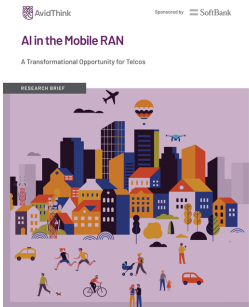|
|||||||
|
|||||||
|
|||||||
|
|
|||||||
|
|
|||||||
|
|||||||
|
|||||||
|
|
|||||||
|

(posted on Rohde & Schwarz Blog)
Roy discusses the importance of observability in Open RAN architectures, both for cloud-native components (microservices) that make up the Open RAN stack and the user-plane traffic that traverses the infrastructure.
(Webinar on June 24, 2025)
Roy joins Camille Campbell and Nathan Herman of Ericsson Enterprise Wireless Solutions to explore technologies and strategies shaping the next generation of connected enterprise sites.
Watch Roy host SoftBanks’s Rajeev Koodli, Shun Tamura, Ryuji Wakikawa for an exclusive webinar on large GenAI telco models and the leading use cases.
Roy provides his key takeaways from the recent FutureNet World 2025 event in London and wonders what “move 37” (unconventional and game-changing) might be for AI in the telecom sector.
Roy moderates a high-level executive discussion on unlocking AI’s transformative potential in telecommunications with industry leaders Mark Duesener (Swisscom), Usman Javaid (Orange Business), Wouter Stammeijer (KPN), and Ned Taleb (Reailize).
Roy leads an intimate fireside discussion with Anita Tadayon (Virgin Media O2) and Rick Hamilton (Infovista) on building the critical foundations needed before accelerating AI initiatives
Industry analysts Roy, Amy Cameron (STL Partners), and Robert Curran (Appledore Research) deliver their expert analysis and reflections on the major trends and insights shared throughout FutureNet World 2025.

This report discusses utilizing AI to optimize network performance, automate operations, and create new revenue streams in the 5G-Advanced and 6G era. It traces the evolution from early self-organizing networks (SONs) to AI-native architectures and delves into key use cases, market trends, and challenges.
Download AI in the Mobile RANIf you would like to meet with AvidThink at one of the following upcoming events, please click on the event below to request a meeting.
17-19 June
Copenhagen, Denmark
To stay updated on AvidThink’s latest content, sign up for our newsletter or follow us by clicking the links below
